
INTERNATIONAL EMERGING SPACE LEADERS (IESL) CREW
MDRS CREW 205
Crew 205 Members:
- Commander: Natalia Larrea (Spain)
- Executive Officer: David Masaitis (USA)
- Health and Safety Officer: Daniel Robson (UK)
- GreenHab Officer: Nathan Hadland (USA)
- Crew Engineer: Veónica Triviño (Spain)
- Crew Astronomer: Ghanim Alotaibi (Kuwait)
- Crew Journalist: Maria Grülich (Germany)
- Communications Officer: Hannah Blackburn (USA)
EXECUTIVE SUMMARY
Mission Overview
Establishing a human presence on Mars is increasingly seen by space agencies and private organizations as the horizon frontier in human space exploration. These long-duration mission impose a high degree of technological, operational, physical and psychological challenges. Mars analog habitats, such as the Mars Desert Research Station (MDRS) in Utah (U.S.) are established to conduct field experiments, test new hardware, new operational concepts and study the social and crew teamwork dynamics in support to these future manned missions to the Red Planet. The International Emerging Space Leaders (IESLs) Crew (or MDRS Crew 205) was composed of eight international young professionals and students, who together undertook a Mars analog mission from February 9th to 24th at the MDRS. The IESL’s Crew was an interdisciplinary team including members from Kuwait, Spain, Germany, the U.K. and the U.S. During the two-week rotation, the crew conducted multiple research projects in support of future analog and space manned missions. A key goal of the IESL crew was to identify key aspects for successful leadership in future space missions. As a case study, the crew rotated command roles during the mission, evaluating each other’s leadership performance during the mission. The team conducted multiple additional research projects relevant to space exploration in areas such as in-situ resource utilization, astronomy, geology, EVA optimization, and science outreach. This mission aimed at contributing to a better understanding of the requirements, benefits and challenges of international teams in future manned missions.

Partners
The IESLs Crew was supported by several partners around the world including the Florida Institute of Technology and the European Space Agency’s EuroMoonMars program. Moreover, outreach programs are going on using the following networks: Pi Lambda Phi fraternity (USA), Astrobiological Research and Education Society (USA), Space School UK, UKSEDS, UK National Space Center, University of Leicester (UK), Space Generation Advisory Council, The Scouting Movement, University of Munich (Germany), ILEWG and ESTEC (Netherlands).

EFFECTIVE LEADERSHIP AND TEAMWORK
A key goal of the MDRS IESL crew was to develop the leadership and teamwork skills of all crew members. As a case study imposed by the Mars Society, all crew members rotated roles during the mission (i.e., all crew members acted as commander and XO at least for a day). This project had a twofold objective: strengthen crew members’ leadership and teamwork skills, and identify key aspects for successful leadership and teamwork in future analog and space missions.
The project used surveys as primary research tools to evaluate leadership and teamwork performance during the mission (e.g.: communication, effective planning, decision making, effect of diversity, etc.) and key lessons learned. The surveys were built on existing open literature[1]. The study included four main phases:
- Pre- Mission Survey: self-assessment of personal leadership skills and expected performance of the crew prior to the mission.
- Mission survey: daily surveys filled by all crew members during the mission including a self-assessment survey (for commanders and XOs) and peer assessment surveys.
- Debriefing: evaluation of the team’s performance, challenges faced, areas for improvement, etc.
- Results Consolidation and Analysis: consolidation of the survey results and analysis.
The data derived from the study will be combined and analyzed after the mission. The results will be summarized in a white paper to be submitted to the Mars Society.
[1] “Leadership Competency Self-Assessment Questionnaire”, Western University (2016)
FOOD PRODUCTION IN REGOLITH TO SUPPORT IN-SITU RESOURCE UTILIZATION (ISRU)
In situ resource utilization (ISRU) strategies on Mars include the use of local regolith for plant growth. Regolith samples collected on the surface of Mars will not be uniform and consequently must be benchtop tested to determine their composition and properties by astronauts on Mars before being used for large scale food production. The purpose of this study was to investigate the viability of regolith collected around MDRS to support the growth of the model plant Arabidopsis thaliana.
- thaliana was sterilized with bleach and ethanol and germinated on agar. After three days, the seedlings were transferred into regolith samples collected on EVA in halved 50 mL conical tubes using a nutrient agar media plug. The samples were subsequently watered using Hoagland’s #2 hydroponic nutrient supplement. Several samples dried out within several hours of transfer. The experiments that died in the first trial were restarted using the same method as above, using more care to pack the regolith around the plug to prevent dehydration. The pH of the regolith was measured using ASTM protocol D4972. The lower pH solutions appear to have performed the worst, with organisms dying within a few days of the beginning of the experiment.
Samples 2 and 3 emerged as the more viable substrates to support the growth of A. thaliana. Sample 2 is composed of an opaque dark material interspersed with quartz particles and becomes clay-like upon contact with water. Sample 3 is composed of similar particles with a larger mosaic of sand. Although it is not apparently clear from their geological properties, their success as a growth substrate was likely due to their wettability (quantitative ability to retain water), larger average particle size, and relatively neutral pH as compared to the more acidic samples 1, 5, and 6. Drastic variations in pH can cause nutrients provided to the plants using Hoagland’s to precipitate out of solution. To make food production on Mars feasible and sustainable, baseline tests like these are necessary in order to determine the suitability of substrates.
| SAMPLE | ~PH (DI WATER) | ~PH CACL2 | AVERAGE | STD DEV | RESTARTED? | TRIALS ALIVE? |
| 1 | 6.5 | 5.8 | 6.15 | 0.49 | Y | 3 |
| 2 | 7.5 | 7.5 | 7.5 | 0.00 | N | 3 |
| 3 | 8 | 8.2 | 8.1 | 0.14 | N | 3 |
| 4 | 8 | 8.5 | 8.25 | 0.35 | Y | 1 |
| 5 | 6 | 6.5 | 6.25 | 0.35 | Y | 1 |
| 6 | 6 | 6 | 6 | 0 | Y | 2 |
ASTRONOMICAL OBSERVATIONS OF VARIABLE STARS AND ASTROPHOTOGRAPHY
The primary goal of the astronomy project was to observe 3 different variable stars and perform photometry on them. The stars were selected from the American Association of Variable Stars Association Notices numbers 632 and 645. Their apparent magnitude was found to be suitable for the MDRS-14 observatory. The following table shows more information about the selected targets:
| STAR NAME | RE | DEC | V MAG | VISIBILITY TIME |
| ASASSN-V J081823.00-111138.9 | 08 18 23.00 | -11 11 38.9 | 12.5 | 21:00 – 1:30 |
| NSVS J1444107-074451 | 14 44 10.68 | -07 44 49.4 | 13.1 | 2:30 – 5:00 |
| SY Mon | 6 37 31.34 | -01:23:43.0 | 7.0 – 14.6 | 20:00 – 1:00 |
In addition to the above planned targets and the proposed photometry work, it was planned to capture astrophotography images using the MDRS – WF observatory. The main challenge was the weather conditions with the second week fully or partially cloudy. Three targets were requested for observation, and an image for one target was taken by the MDRS-14 observatory. The following table summarizes the reports and observations submitted:
| DATE OF REQUEST | TARGET REQUESTED | IMAGE TAKEN DURING ROTATION |
| 10 Feb 2019 | SY MON | Yes |
| 12 Feb 2019 | ASASSN-V J081823.00-111138.9 | No |
| 18 Feb 2019 | Orion Nebula | No |
As shown in the table above, the only completed observation request was for SY MON. 4 photometry measurements were performed for SY MON as per the following table. The Magnitude Value of 14.132 was submitted for the AAVSO website.
| MAG VALUE | COMP STARS LABELS | CHECK STAR LABEL | ERROR | COMMENT |
| 14.147 | 93 111 122 134 148 | No Check Stars were used | 0.01568 | This measurement was repeated because of no check star was used, CCD setting was wrong and there are better ways to select comp stars. |
| 13.918 | 140 143 132 97 | Check star used indicates bad measurement or check star itself was saturated | – | Measurement repeated |
| 14.118 | 140 143 132 | No check star because this is manual calculation | – | It was found that Comp 97 positioned outside the straight line of the curve, thus it was decided to exclude it. |
| 14.132 | 140 143 132 | 122 | 0.0185 | Data was submitted to AAVSO |
MAKING FUTURE EVAs SAFER AND MORE EFFICIENT
Project 1: EVA Navigation
Drone for lighthouse: The drone flew stably at altitudes below 6m, while carrying neon tape weighted with washers. Unfortunately, the neon tape acted as a kite and pulled the drone off-course. An alternate source of visibility could be used for this proof of concept to be more viable. In tests performed inside MDRS, the drone lifted a sizeable glow stick. If a stronger drone with a brighter, heavier glow stick attachment system could be flown and survive higher winds stably, then the method could be implemented successfully.
Drone for pre-scouting: The drone flew successfully at altitudes below 10m on flat areas near MDRS and on top of Kissing Camel Ridge East. Photos were captured over target areas of an appreciable area better than could be visualized by a human on the ground or by satellites. These photos could be uploaded to a laptop in the field. Use of a scale marker (3 m of neon tape) allows the images to be used for accurate mapping. However, the ground often appeared too bright, meaning smaller features were hard to resolve. With an improved camera and a drone capable of flying stably to higher altitudes, this could be a viable tool for mapping landscapes around an EVA crew.
Laser Rangefinder: The laser rangefinder was used in the field and tagged distant and difficult to outline objects such as cliffs, ridges and the MDRS base. However due to the dimensions of the EVA helmet visor, it was difficult to see through the viewfinder. If the device could be mechanically incorporated into or onto the helmet visor with a more ergonomic operating procedure, then the tool could be a useful planetary exploration tool.
Project 2: EVA Optimization
Analysis of the first few EVAs conducted by crew 205 during their rotation at MDRS showed that the success of an extravehicular activity (EVA) depends highly on both the EVA crew and Support crew being aware of planned objectives and intended routes. This means that both parties should conduct EVA planning together, in order to understand what should be accomplished and what hazards could impact EVA outcomes. Pre-and-post-EVA checklists and SOPs were created to allow crews going on EVA to expose deficiencies in both the planning and execution. This allows team members to improve the process of preparing for an EVA, leading to more effective and safe EVAs. The Post-EVA Debrief checklist in particular will (when utilized by successive crews of planetary analog sites) expose complacency and help leaders to conclude which issues are impeding objectives from being accomplished.
DEVELOPING GUIDELINES AND STANDARD OPERATING PROCEDURES (SOPs)
Conducting a mission at MDRS requires adequate and effective planning and execution of all steps in the mission. During their rotation in February of 2019, Crew 205 developed a series of procedures and checklists to improve crew efficacy, and generate more operational continuity from future crews. This began from the moment Crew 205 conducted handover training with Crew 204, and concluded with crew revisions after the cessation of extravehicular activities (EVAs). These procedures focused primarily on points of performance for EVAs, unique tasks for Crew Engineers, Health & Safety Officers (HSOs), and element leaders, and critical tasks for crew members who are supporting EVA operations from the Habitat campus. These comprehensive checklists and procedures carefully outline specific tasks regarding Pre-and-Post-EVA checks for leaders and support teams, an HSO Medical Quick Reference Card, an Engineering and Maintenance task sheet, and rotating module inventories.
OUTREACH ACTIVITIES
The focus of our outreach project is to Inform, inspire and Involve. We Inform using videos explaining information about the life and MDRS and about Mars using a small puppet called “Gus”. Gus is featured as each crew member who are explaining their tasks and research that they are conducting. The videos are short and kids friendly, easy to understand and will be shared on YouTube and Facebook.
A question and answer session was organized on Facebook to involve all followers in the mission. We Inspire as we gave kids the ability to send us their pictures and we did a photo on EVAs. The crew members took several outreach pictures and daily updates were posted on social media platforms.
Furthermore, crew members will go back to their institutions to give talks about their experience in MDRS. We Involve everyone sharing all our pictures and videos to make them available for the public. We used several networks that are listed at the beginning of this mission summary.
Crew members took pictures and videos throughout the mission. The best photos were sent to our social media channels. Videos for the Youtube channel were recorded throughout the. The talks and visits to high schools and universities will be done when we return from Mars.




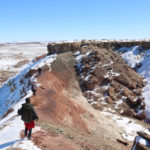
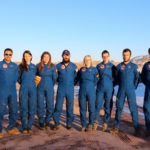
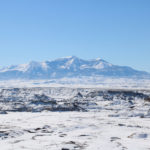
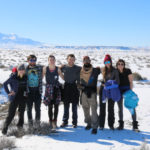
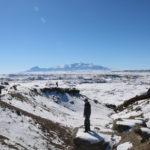
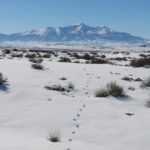
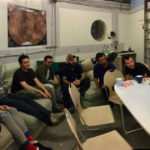
You must be logged in to post a comment.